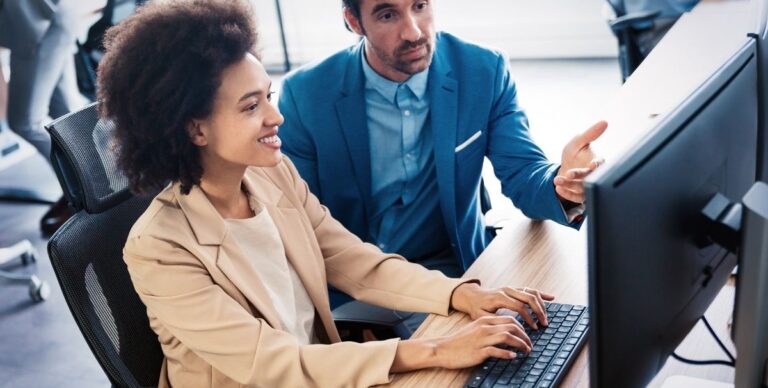This is a ridiculous topic to discuss, but there are numerous questions about JavaScript vs Java flocking around. Anyway, my teacher liked to say that there are no stupid questions, there are stupid answers. So, with the help of the community of developers, I’ll try to give a reasonable answer to this question.
Naming

I’ve found the article that makes a brilliant analogy that Java is to JavaScript as ham as to hamster. In other words, ham and hamster have nothing to do with one another that the first 3 letters on their name, implying that Java and JavaScript have nothing to do with one another except for the first 4 letters of their name “JAVA”.
Yeah, It’s little too extensive. Java and JavaScript do have a lot in common. They are both programming languages. However, they are separate programming languages, even though they have some common constructs, such as object-oriented programming principles.
But think of the analogy this way. You do can eat ham and hamster (they are both made of meat), but we’ll certainly advise you to refrain from eating hamster in the first place. There is a common misconception that Java is a subset of JavaScript or vice-versa. That is not correct.
There is a common misconception that Java is a subset of JavaScript or vice-versa.
Java & JavaScript: the way to greatness
JavaScript was first introduced in Netscape Navigator in 1995 (one of the first internet browsers) and was called LiveScript (originally it was called Mocha). Apparently, LiveScript (Mocha) had troubles getting audience interest, and that’s why it was decided to change the name to leverage the positive buzz. Java was such buzz-accumulation language at that time. So, some people say that re-naming was a marketing ploy to gain traction.
Now, when you understand the basics, we may talk about Java and JavaScript in greater detail. Both languages are well-known and quite popular today. But how did everything begin? And how were the stories of Java and JavaScript unfolding? Let’s take a look at the main milestones.
Java: revolutionizing the Internet
The history of Java dates back to 1991, a year when many of today’s software engineers were not even born. Initially, it was planned as the language for programming household appliances controlled by a number of computer processors. It took Java’s creators (James Gosling, Mike Sheridan, and Patrick Naughton who worked at Sun Microsystems) nearly two years to realize that this language may also be used with web browsers.
The first version of Java (i.e. Java 1.0) was released by Sun Microsystems in 1996. At that time, the tech world was already ready for it since some experts had been making predictions that Java would start a new age for the Internet. Hence, no wonder that Java’s popularity was growing quite rapidly. Most web browsers incorporated the ability to run small applications written in Java within web pages. Such applications were called Java applets. And this was the first step towards interactive web pages with visual effects on them.
Since that time, Java has been continuously evolving with new versions appearing every few years. Java SE 12 that is the latest version of the language was released on March 19, 2019.

Nowadays, Java is one of the most popular programming languages, according to the TIOBE Index.
JavaScript: the beginning of the modern web
Like Java, JavaScript appeared on the horizon in the 90’s. The project was started and funded by Netscape Communications, a corporation that owned at that time a quite popular web browser Netscape Communicator. In 1995, Marc Andreessen, a founder of the corporation, decided to make the web more dynamic and his idea became a trigger for the creation of JavaScript.
You may wonder: isn’t this something very similar to what Java was for? Well, yes, but only as the general concept. JavaScript wasn’t planned as another language for developers or as a competitor of Java. It should have been a simple enough so that people with no programming background (for instance, web designers and scripters) could use it too. In other words, both languages were planned to coexist. However, Java was aimed at the development of complex web components while JavaScript should have been used just for small client-end tasks.
The first prototype of JavaScript (or Mocha as it was called at first) was integrated into Netscape Communicator browser in May 1995. But the true “birth” of JavaScript happened in 1996 when it was significantly rewritten by Brendan Eich, its creator, in order to get rid of technical debt. Another important milestone in JavaScript history was ECMA standardization (also in 1996). This is, actually, the reason why JavaScript versions are called “ECMAScript”.

Today, JavaScript is supported by all browsers. Actually, it’s considered one of three foundations of the modern web (along with HTML and CSS). Nearly 95% of all websites are powered by this language.
Is there a Difference Between Java and JavaScript?
Now, once we settled all the confusion that goes around the naming, let’s get to the real differences between Java and JavaScript. The key is to understand front-end development versus back-end development.
JavaScript, for the most part, is a front-end development language. Meaning that just like HTML and CSS, JavaScript is run in the browser. JavaScript, in particular, is used to interact with user and content. More details on how does JavaScript work you can find here.
On the other hand, Java is compiled before it can be run. Java code is typically written in an Integrated Development Environment (IDE) and compiled into bytecode, which is then fed to the machine without any browser in-between.
Compiled vs Interpreted
When I say “run in the browser” I mean that the browser interprets and executes code written in JavaScript and then after several other instances direct those commands to the hardware in form of bit code. Where is Java, as well as C++, C# is truly compiled before they can be run on the hardware. And that compiler typically lives on the server.
Because of such structural nuance, Java would typically be a back-end program, that runs on the server side. Where is JavaScript is comfortable to use (because of its agility) as a front-end language that is interpreted by the browser on the go.

Here’s the official explanation from Java’s website.
JavaScript + Back-end vs Java + Front-end
Now, this gets confusing very quickly as JavaScript also has the ability to be run on the back-end. As well as Java has the ability to create Java applets that can be run by the browser.

But this is just a matter of choosing the right tools. As for the most part, you can think of Java as a standalone programming language that is compiled at the back-end, and JavaScript is executed by the browser.
In the meantime, the recent rise of Node.js (a cross-platform JavaScript run-time environment that executes JavaScript code on the server-side) has triggered the spawn of numerous web apps powered solely by one programming language – JavaScript. Which may be is quite handy if you’re considering development of web app.
Branching vs Run-anywhere
Java has been the most used programming language for years. Mostly thanks to the motto “Write-once, Run-anywhere”. Java was designed to connect all the various devices and allowed developers to write their code once and deploy it to any operating system without making changes.
This is one of the main reasons why Java has been chosen as a primary programming language for Android OS. And this is why you’ll probably need Java programmers or Android development if you’re going into IoT space.
On the other hand, JavaScript is much more susceptible to the environment where it runs (typically environment = browser). Hopefully, the programmer can develop specific queries to the environment. Base on the answer to those queries JavaScript-based app would choose which branch of code to run for that specific environment.
Hourly rates of Java and JavaScript developers
Hourly rates of developers depend on several factors such as seniority level, the scope and complexity of work, geographical location, and, of course, the programming language they work with. In this regard, Java and JavaScript are quite similar because the rates per hour for both languages vary between $61 and $80 globally (see the chart below).

However, if you need to hire a Java or JavaScript developer, just looking at the average rates worldwide is not enough. Because the junior software engineer in the US may charge as much as a senior programmer in Eastern Europe. But, as you might have guessed, the two have a different level of expertise. That’s why when choosing a coding team for your project we strongly encourage you to consider a region as well. Let’s take a closer look.
The US
The US, obviously, is the most expensive country in terms of software development. For instance, the average annual Java developer salary here constitutes $104,663. JavaScript developers receive about $105,744 a year. Hence, the hourly rates vary between $50 and $150. The quality of services is usually high as well. But still the project costs are not always justified since there are more budget-friendly options.
Europe
The hourly rates of Java developers and JavaScript developers differ in Western and Eastern Europe. In the former, programmers charge as many as in the US and other conditions are very similar (i.e. quality, work approach, the level of English etc), so we will not focus on them in this article.
The situation, however, is completely different in Eastern Europe. For example, rates charged by Ukrainian developers (both Java and JavaScript) range between $25 and $50 per hour. As you might have noticed, the numbers are even a bit lower than average rates worldwide. So you’ll not overpay if you decide to hire Java developer or JavaScript developer from Ukraine. Neither will you compromise on quality because programmers from Eastern Europe have a reputation for good expertise and outstanding work approach.
Asia
Programmers from Asia are considered the “cheapest” ones, meaning that they charge the lowest rates for their work. For example, a Java or JavaScript developer from Pakistan may cost you as few as $8-10 per hour. However, such a low price usually goes at a cost to quality. So we recommend you to be especially cautious if you decide to look for a coding team in Asia. There is a risk that you’ll end up with non-working product and need to start everything all over again.
Bottom Line
I hope this article would be your definitive guide as to how Java and JavaScript are separated. Now, if you’re short on time and tired of researching/reading about web development, I advise you to proceed to this last article, which I hope will greatly save your time. It explains what specifically you should bring to the table, and why googling about Java vs JavaScript might be a waste of time for you.





